A 30-course meal marks Eid al-Fitr in the disputed valley.
The line outside New Zum Zum Hotel, a blue-tented, outdoor restaurant in a residential neighborhood in central Srinagar, had begun forming at 7 a.m., Gulam Rosul explains, quietly moving among the thirty boiling pots that lined the restaurant. Cars full of customers drive up as Mohamed Shafi, the owner, sits cross-legged, ladling food into takeaway bags.
“It’s Eid, so I’m very tired,” Rosul says. His hands are stained yellow from turmeric and other spices, and even when he washes them, the color persists. He’s been cooking for Eid al-Fitr for 18 days, working all night—from 10 p.m. until 7 a.m.—to celebrate the end of Ramadan, the lunar month during which Muslims fast for from dawn to sunset. On Eid, the prohibition ends, and Muslims around the world celebrate with feasting. The smell of slow-cooked mutton hovers, fragrant and sultry, in the air, and despite the familiar air of unpredictability in Srinagar, spirits are high and the streets are filled with happy greetings of Eid Mubarak.
“I enjoy the work,” Rosul says, smiling shyly. “I enjoy being a waza. It is an honor here in Kashmir.”
Kashmir has been disputed since the partition of India and the creation of Pakistan in 1947, and has been the source of three all-out armed conflicts between India and Pakistan. It is often branded with—or trapped by—a narrative of conflict. Last year during Eid celebrations, massive anti-India protests spiraled out of control, leading to four deaths and an 82-hour ban on Internet access in the Kashmir Valley. Isolated fighting has persisted, often in the form of stone-pelting youths against Indian army officers.
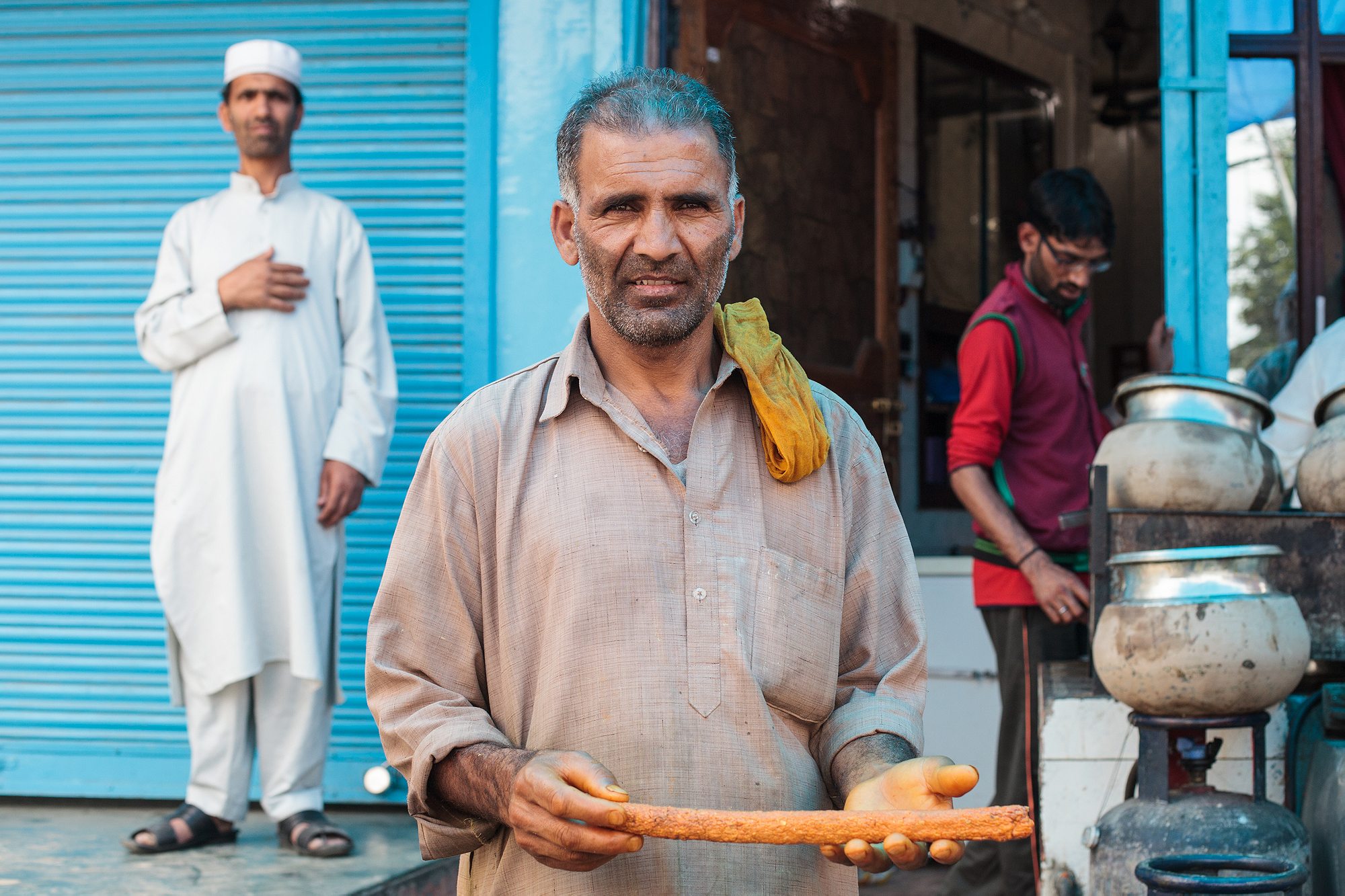
Kashmir remains one of the most militarized zones in the world—with an estimated 70,000 dead and 10,000 still missing since 1947. Threats from radicalized young people, some of whom come to the area from Pakistani militant training camps, dampen any sort of nightlife. Anti-India sentiment runs high.
While most Kashmiris are incredibly tired of talking about the conflict, and were quick to reinforce that the region was at peace, Eid this year wasn’t entirely apolitical, either; while the rest of India’s Muslims declared they’d celebrate Eid on Thursday, Kashmir celebrated Eid with Pakistan the day before.
But beyond the familiar narrative of fighting, Kashmir is famous for a tradition that brings Kashmiris, Indians, Hindus, Christians, and Muslims together at the table for wazwan, a 30-course Kashmiri feast that is unique to the region. The meal is reserved principally for celebrations, weddings, and high holidays, including Eid.
It can sometimes take weeks to prepare a wazwan meal
A wazwan—derived in Kashmiri from waz (“cooking”) and wan (“shop”) is cooked by wazas such as Rosul, who are in such high demand in Kashmir that many couples plan the date of their wedding around the wazas’s schedules. It can take days and sometimes weeks to prepare a wazwan. Typically, the meals are meat-based and can range from 10 to 36 different courses, depending on the size of the ceremony. Traces of wazwan ceremonies can be found as early as the 14th century under the Mongol ruler Timur, but the feast has evolved over the centuries into what became an elaborate ceremony for royalty. The meal is eaten by all faiths living in the area, and traditionally was a meal shared by many faiths at times of great celebration.
“I cook for Hindus, I cook for Muslims, I cook for everyone,” Rosul says. “Lots of tourists come. I cook knowing the Hindus will come, the Christians will come. They like chicken and vegetable dishes. I can make everything. It doesn’t matter what religion.”

Rosul is more interested in showing me the food than talking about Kashmiri politics, and waves me over to the next bubbling cauldron of food: a large, nickel-plated copper pot that is almost knee-high. “Lahabi kabab,” he says. “Our specialty.”
“This dish,” he says, pouring a sample into a rusty tin plate for me to try, “takes many days to prepare. It is special to Kashmir, special to our Zum Zum Restaurant.”
Lahabi kabab, a mutton kebab soaked in a deep red sauce, is a famous Kashmiri dish that can be found in almost every wazwan. Rosul brandishes a heavy wooden hammer, which he explains is used to pound the meat. Once softened, he soaks the meat overnight in egg and at least nine different spices, including onions, red chili powder, nutmeg, garam masala, ginger, garlic, and coriander. The dish is typically served with yogurt.
I try the dish as a sea of eyes wait for my reaction. The meat is tender and elaborately spiced, with a hint of cumin and coriander and a slight spicy aftertaste. It is delicious.
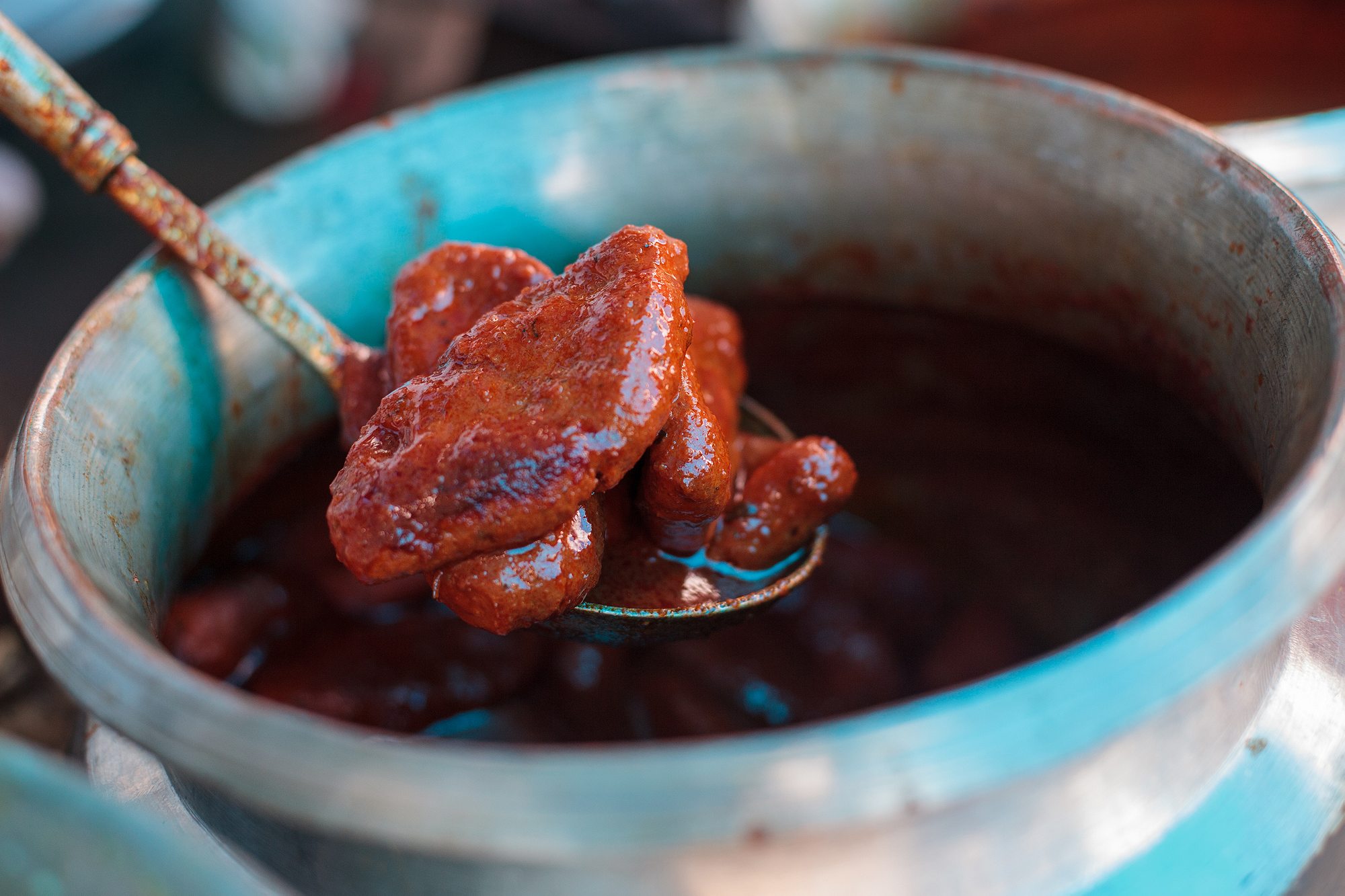
A customer waiting in line explains it is Kashmir’s best dish. Another man interjects, correcting him.
“No, rista is Kashmir’s best,” he says. “Have you tried rista?” he asks me, referring to a dish of meatballs cooked in red gravy that is also traditionally a part of a wazwan.
Kashmiris pride themselves on their cuisine. I can understand why; the food is more than just an amalgam of spices. It’s a synthesis of Mughalite, Afghani, Sikh, Gilgit, and Jammu recipes, combined in a valley region rich in saffron, almonds, cashews, walnuts, chilis, ginger, dried fruits, cloves, and coriander seeds. A Kashmiri dish is a dip into centuries of displaced cultures.
Other popular Kashmiri wazwan dishes include gushtaba, minced mutton, and daniwal korma, mutton with coriander in a yogurt-based gravy. While most dishes are meat-based, Rosul explains he cooks vegetarian dishes too, such as gogji nadir (lotus stem and turnips), dum aloo (potato curry), and rajma shalgam (kidney beans).
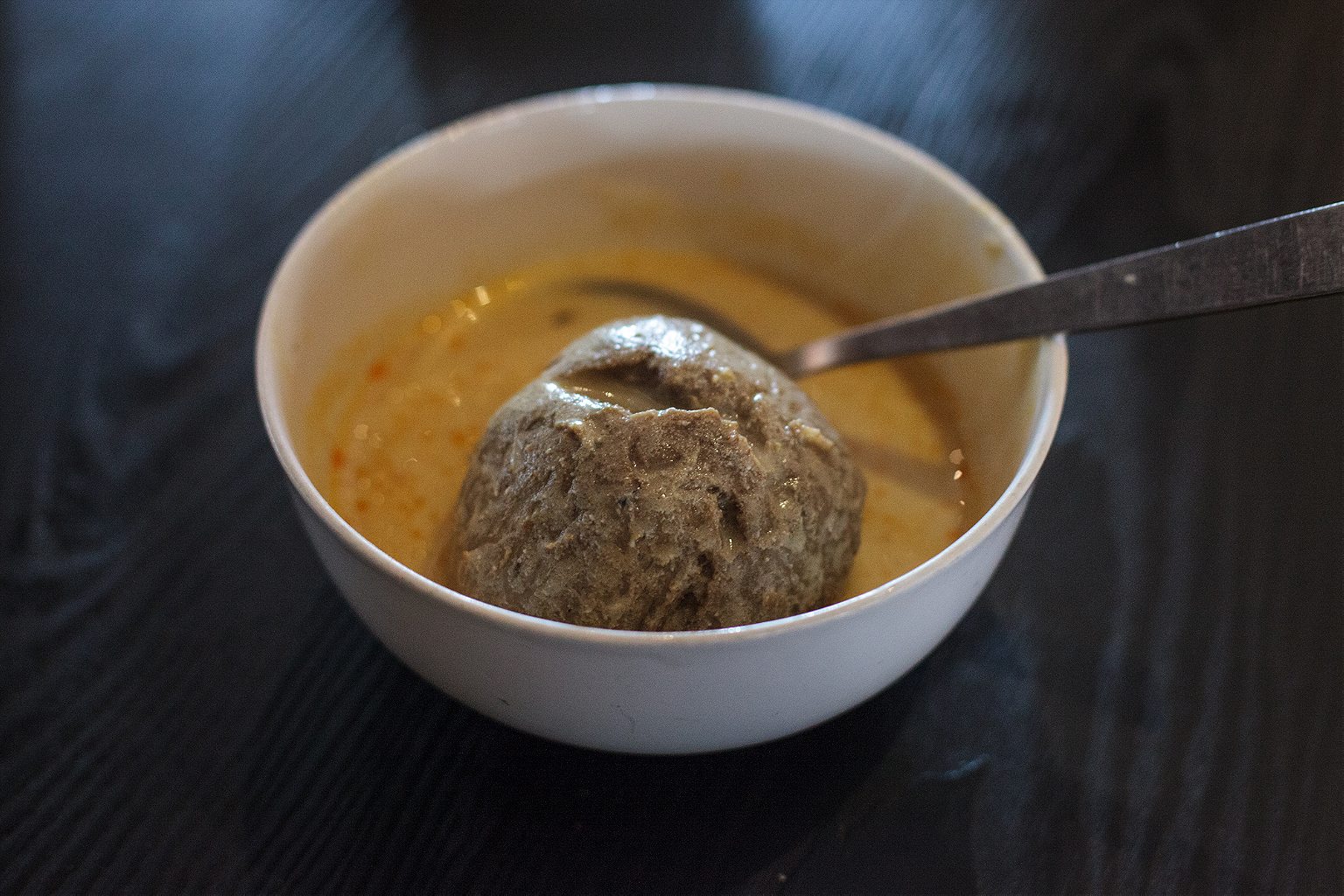
Inside New Zum Zum, a group of men visiting from Jammu are celebrating Eid together. They’ve just come from the morning Eid prayer and are dressed in casual kurtas.
“We always come here when we’re in Srinagar,” Mudussar Azad tells me. “I take all my friends here, even my Hindu friends. The Lahabi kabab is the best in the city.”
I ask if he knew how to make the dish.
“No, no,” he says, shaking his head. “Only the waza knows.”
Despite their demand and prestige, wazas make very little. Rosul tells me he earns 15,000 rupees ($222) per month, and works seven days a week, an equivalent salary to that of an auto-rickshaw driver or store clerk. Occasionally, however, when he’s hired for a wedding, he can earn the same amount in a single night. But he claims he doesn’t care so much about the money; for him, cooking is his passion.
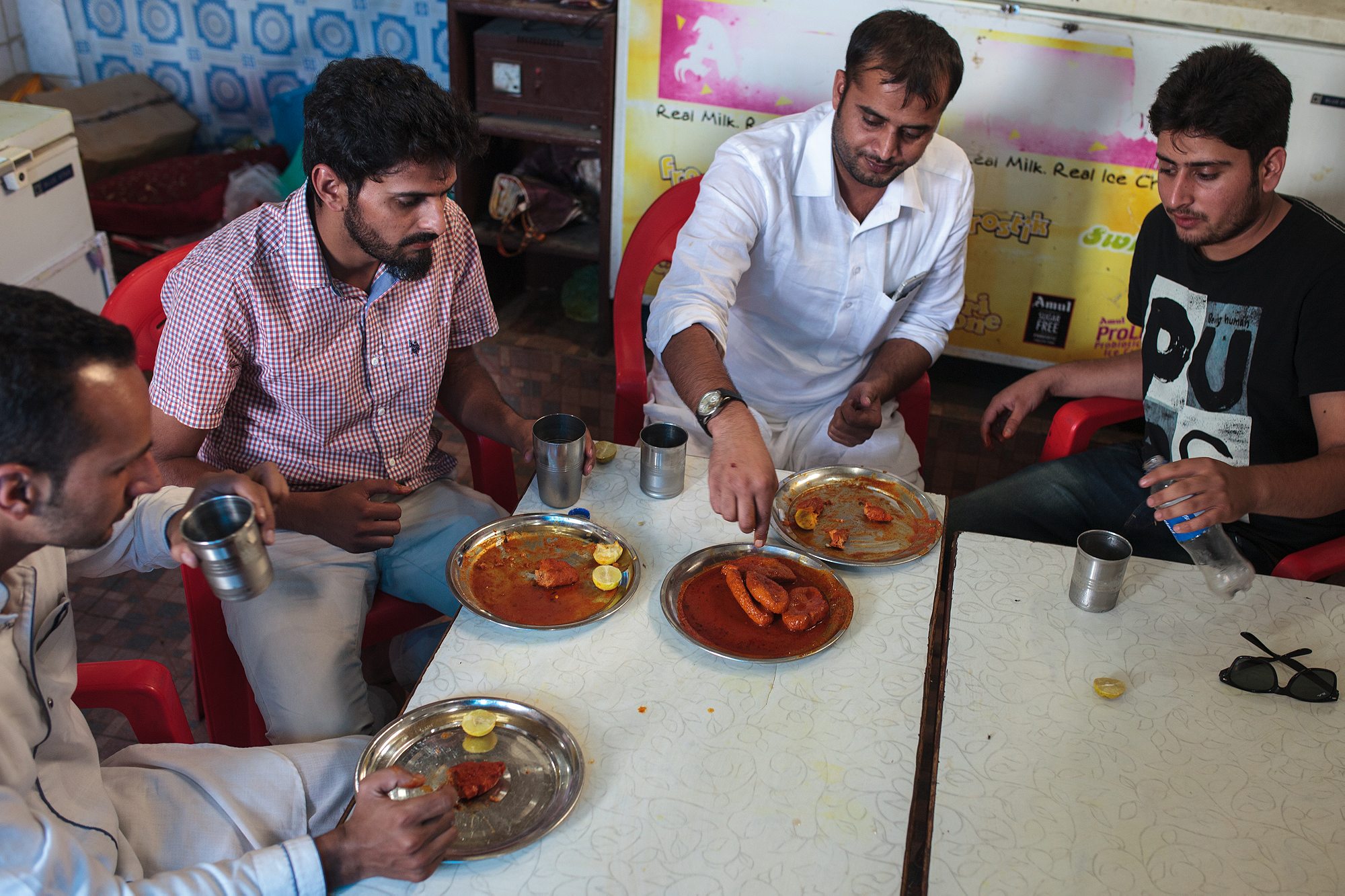
The call to prayers interrupts the steady flow of customers, and soon the streets begin to empty as men trickle into the mosques. Mohamed Shafi, the owner, sighs with relief. He’s been dishing out Eid meals since the early morning, he explains. But he is smiling.
“We make one lakh rupees per day usually,” or about $1,500, he tells me as he readjusts his crossed legs. “On Eid, we make eight lakh rupees,” roughly $15,000.
The Zum Zum Hotel restaurant—which is neither attached to nor even near a hotel—has been in Shafi’s family for over 60 years. It has made a name for itself by exporting wazwan meals to various countries, including the U.S., by freezing and packaging the meals in airtight boxes.
The restaurant seems to be supplying a good number of families in Srinagar with their celebratory Eid meal. Nearly 700 pounds of meat were pre-ordered for the occasion.
Aside from Zum Zum, nearly every restaurant in the city is shut down. I walk the barren streets, searching for another wazwan, past rifle-bearing Indian army officers standing in pairs on street corners. There were protests earlier in the morning: protestors were angry that major separatist leaders were kept under house arrest and could not lead the Eid prayers. But the protests were mild and no one was seriously injured. The air feels festive, peaceful.
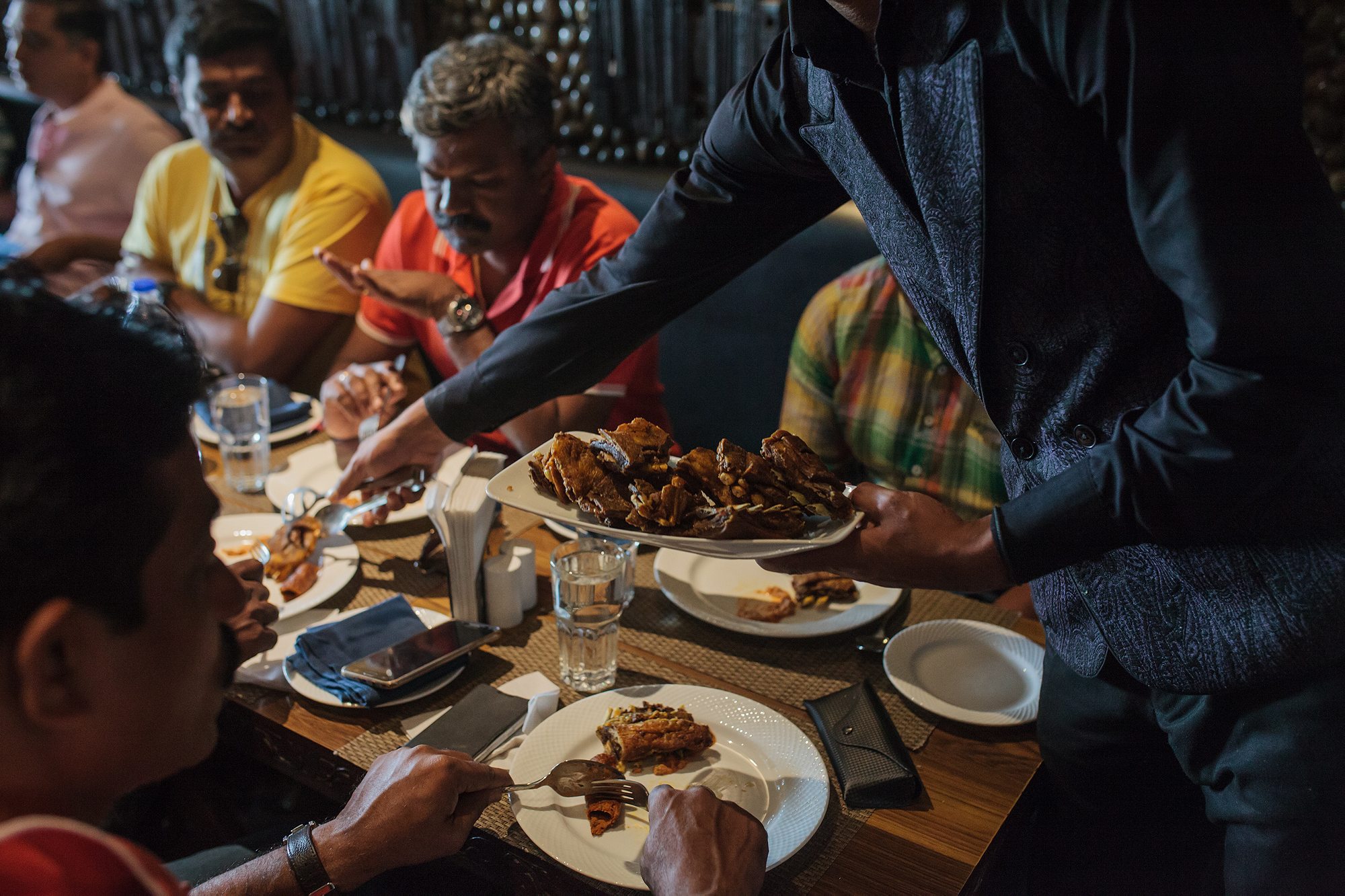
I am directed to Srinagar’s most famous restaurant, Ahdoo’s, where I am told a more formal, ceremonial wazwan is served. Ahdoo’s is a famous stop for wealthy Kashmiris and tourists looking for traditional Kashmiri food.
Inside the wooden-lacquered room, a family of Kashmiri pandits—Hindu Brahmins from the valley—are dining. Along with most Kashmiri pandits, they relocated to Delhi in 1990 after riots in which Kashmiri pandits were systematically targeted and killed by Muslims. As many as 350,000 pandits have fled Kashmir since, and only a couple thousand remain.
“We’re only back visiting,” Arun Koul explains. “But I remember Eid from a long time ago, when I was only eight years old. Eid wasn’t our festival. But we would celebrate wazwan sometimes at friends’ houses. Sometimes our friends would send us food. For all the festivals, both religions were mixed together.”
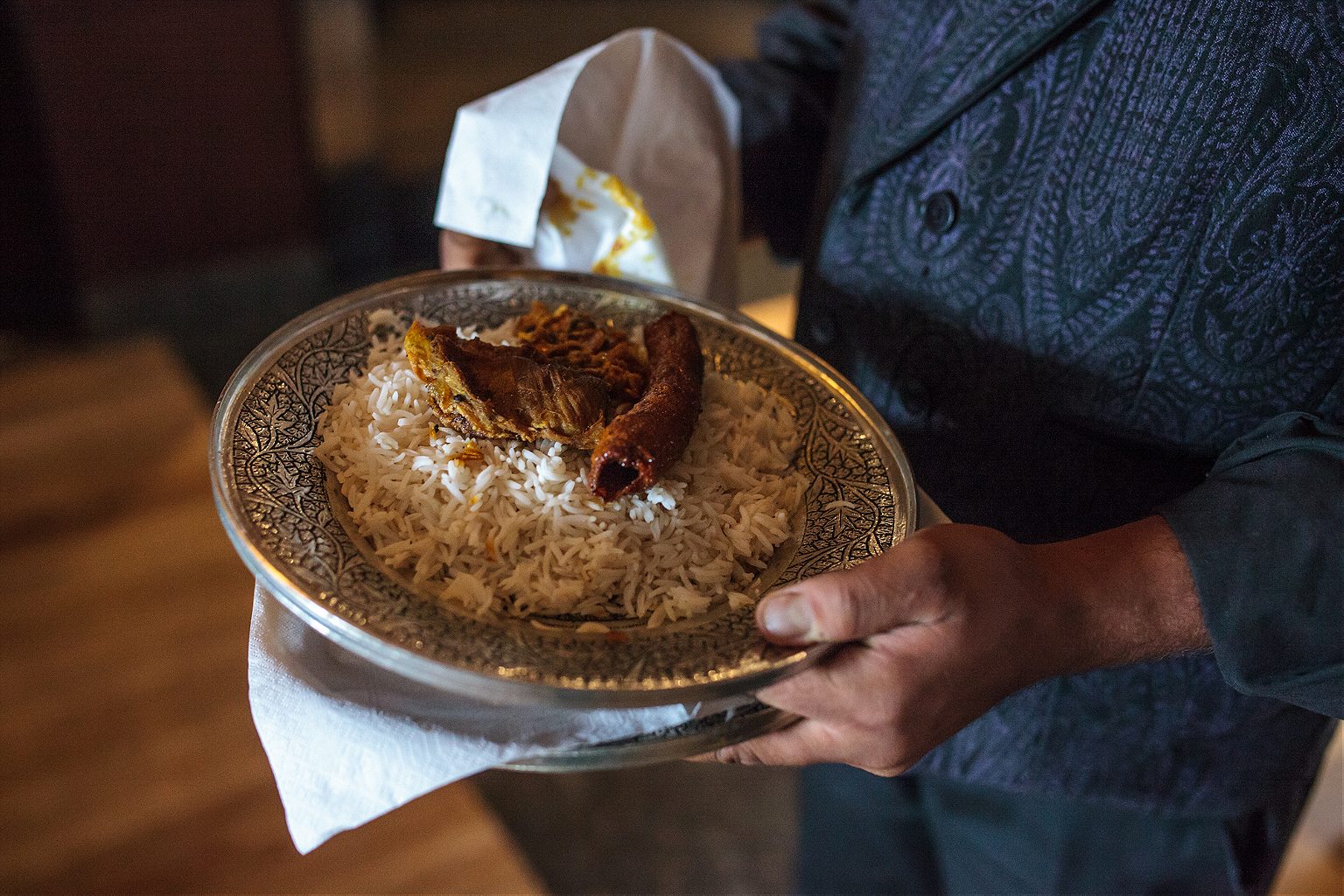
Six or seven wazwan dishes arrived, and the family begins to eat the dishes with which they grew up.
“We love Kashmiri food,” Koul says.
I walk partway home, jumping as fireworks explode loudly from echoing streets. The sweet aroma of stewing rista and dumaloo carries through the streets. Terrorist attacks have darkened the month of Ramadan for many people around the world. However, on Eid in Kashmir, the night is deep and blue, and I fall asleep listening to soft singing, children setting off fireworks, and the quiet murmur of prayers chanting “Eid Mubarak.”
Reporting for this piece was facilitated by a grant from the Pulitzer Center on Crisis Reporting.